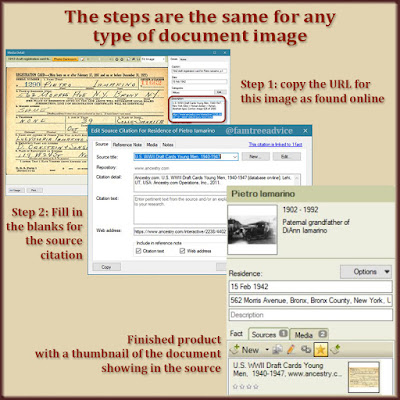Restoring damaged, faded photos leads to old memories and new revelations.
My Aunt Lil's photo collection (my new family tree gift) is still waiting for me to scan it. On Wednesday, an online Photoshop tutorial inspired me to scan 3 photos in particular.
There are a lot of photos of my grandmother Lucy in that collection. That's fantastic because I had almost none. Lucy died a few years before I was born, so I didn't grow up with her as my grandmother. Instead, I had my grandfather's 2nd wife, Sadie. She wanted us all to call her Sadie, not Grandma. She once corrected my sister, saying, "I'm not your grandmother." Alrighty then.
Sadie was always pleasant and kept a nice house. She cooked a pot roast so outstanding we still call it "Sadie Meat" 3 decades after she died. A while ago I realized I had no photos of Sadie. She died a few weeks before my wedding, so there were no family portraits with her.
No one in my family knew her maiden name, either! I discovered it when I found her immigration record and naturalization papers. Sadie came from Nicosia, Sicily. Her citizenship papers included a barely recognizable photo of her. My mom couldn't believe it was her. (Fun fact: The lady who told us not to call her Grandma was actually named Santa! Merry, merry.)
 |
| Restoring this unique photo made my step-grandmother more real to me. |
When I went through my aunt's photo collection, I found 2 photos of Sadie. The 1st photo is from April 1979. It's a good representation of the Sadie I knew. It's a bit faded, but Sadie and Grandpa look good. The 2nd photo is from December 1958. This is when Grandpa was courting Sadie. They married 4 months later. I'm struck by how happy and in love Grandpa looks. It's sweet.
Unfortunately, the 1958 photo is faded, cracked and creased. After watching a pro demonstrate Photoshop features, I wanted to work on these photos.
When I auto-corrected the color on the 1958 photo, Sadie was wearing a purple dress and had dark hair. It was shocking to see her in her prime. As I adjusted the color to make the Christmas tree green, Sadie's dress turned a deep cranberry color.
Now I had 2 very nice photos of my step-grandmother. I remembered that Aunt Lil's collection also has a photo of Grandpa and Sadie's house. I restored the color to this faded photo. The 2 cars near the house look like they're from the late 1950s or early 1960s. That means this is only a few years before I would be visiting Grandpa's house in the Bronx.
 |
| Using techniques I learned in a Photoshop tutorial, I brought color and depth back to Sadie and Grandpa. |
How moving it is to see the roses (not in bloom) growing over the arbor above the front gate. Grandpa's property was a lovely garden in front, and a backyard garden so big it was like a small farm! Grandpa and Sadie lived on the main floor, and they had a full basement. Upstairs was an apartment Grandpa rented to my mom's uncle and aunt. Seeing this photo of the house brings back so many memories. We'd all go visit Grandpa, then my mom would take me upstairs to visit her relatives. As a kid, I thought it was a coincidence that Daddy's family was downstairs and Mommy's family was upstairs.
I'm feeling inspired. Instead of cranking out the photo scans, I want to enhance the ones I can. These 3 photos need to go right into Family Tree Maker, attached to both Grandpa and Sadie. I'll add the house photo to my aunt and uncle, too.
I watched a Photoshop course on a paid educational site (LinkedIn Learning). But you can get inspired by free tutorials on Adobe's site.


















